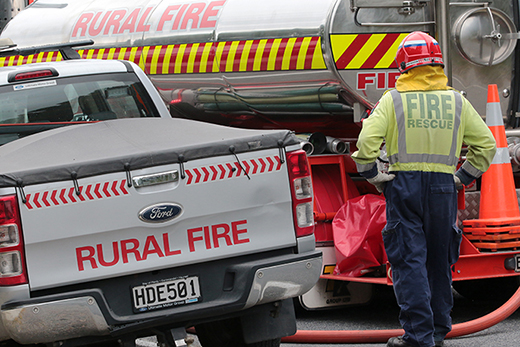Fire prevention can be simple and logical. However, as fire investigators report, fires are more often started by simple mistakes. Many dairy farmers will have just completed a ‘gypsy day’ or change of farm where it is not only the farm stock and equipment that moves but a time when farming families move to another house. It could be to an old farm cottage or homestead that might have old wiring. So this is a good time to look long and hard at what is in the house and its surrounds to see how you can ensure you and your family are safe from a house fire. Tokoroa Volunteer Fire Brigade chief Dave Morris spoke with Coast & Country about fire prevention. Smoke alarms First and foremost – do you have smoke alarms? And more importantly are they working – with a new battery? “A working smoke alarm will, at least, give you and your family a chance to get out if a fire starts,” says Dave. But while smoke alarms are proven to save lives, prevention is the best option. Do you have a safe and quick way for everyone to get out if the house does catch fire? Are the doors locked? Where are the keys? Have you told your kids what to do if a fire starts and have you shown them how to do it? Are there two ways to get out of the house? Dave says there are several common causes of house fires and while he is quick to point out that no two fires are the same, after more than 20 years as a firefighter he knows there are certainly common themes. Cooking fires Cooking fires – left unattended a pot on an element can quickly become the combustion point for a fire. “Frozen meat or sausages put into a hot pan and then left for only a short time could very quickly become a flash point.” The frozen part causes the food to spit onto the hot element and can become the combustion point for a fire. Hot embers – cleaning out the embers from the fireplace has resulted in many house fires. “The embers stay hot for up to five days. Do not put ashes into a plastic bucket or a cardboard box. Always empty embers into a metal container, add water and place away from the house.” Electric blankets are the cause of many fires and often start when everyone is asleep in bed. The common cause of electric blanket fires are old blankets that have become tatty. Each winter electric blankets should be checked by a qualified electrician. Electric blankets “When you fit a new electric blanket onto a bed, only use on low heat for the first couple of uses because blankets are often folded in packaging, compressing the wires.” Dave says cheap or old power or multi-boards can overheat or if placed behind furniture the pressure against the wires can cause them to start a fire. When purchasing a multi-board, buy the best you can get – with an overload switch. Sleeping and smoking – again a common cause of many house fires where someone is sleeping either in bed or in the comfy lounge chair and the lit cigarette falls onto the chair or bedding and starts a fire. Uncleaned lint A clothes dryer – again the cause of many house fires. There are two separate opportunities for fire with clothes dryers. Firstly, the dryer with the uncleaned lint filter and set on hot. The lint acts as a flash point. The second is the dryer that does not have a ‘cool down’ setting and gets really hot. The dry clothes all clumped together can ignite if the dryer just continues to heat up and even when clothes are taken out of the dryer – spread them out so they do not ignite. So go through your new home, check each room carefully for any potential combustion point. “Does your property have an alternative water supply – stream nearby, or a big swimming pool? Think of the scenario of needing to use it to save your house, is there access to the water?” says Dave. The last but possibly the most important item to consider: Rapid number How does a fire engine get to your house – or farm shed? Is your rapid number or street number easily visible in daylight and in the dark? Can it be seen from both directions? Is the access into the property straightforward? Are there overhanging trees? Is there four metres clearance up the whole driveway? Can an engine or any emergency vehicle get up the drive and to the house easily and fast? When your house is on fire and you have called the fire brigade, you want them there as fast as possible. You don’t want to see a fire engine stuck in the driveway because there are overhanging branches or the access is just too tight. Take the time now to look at your new house – or the one you are living in now – look for possible problems then look at the outside and imagine the fire engine rumbling up to your house. When you have a fire you want that engine and those firemen there as fast as possible and as close to the problem fire as you can get them.
Wednesday, April 24, 2024
Posted: 10:15am Wednesday 07 Jun, 2017 | By Fritha Tagg
Moving house? Here’s some safety tips



0 Comments
Leave a Comment